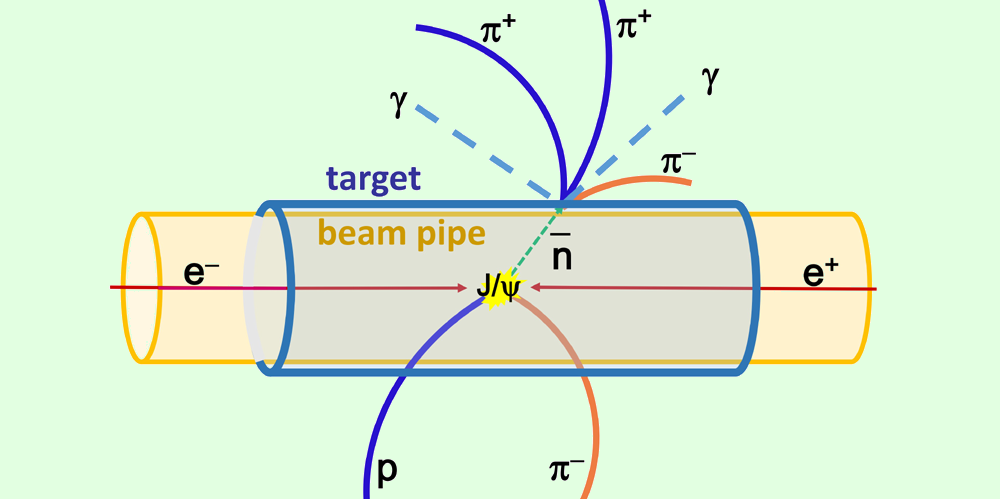Jul 2 2021
A recent study conducted by Prof. Changzheng Yuan from the Institute of High Energy Physics of the Chinese Academy of Sciences, and Prof. Marek Karliner from the Tel Aviv University of Israel reveals a new, abundant source of antineutrons and hyperons.
 Schematic diagram of antineutron production and interaction with a proton in the target. Image Credit: Institute of High Energy Physics
Schematic diagram of antineutron production and interaction with a proton in the target. Image Credit: Institute of High Energy Physics
These subatomic particles are rare and are essential in studies related to the forces that govern the behavior of matter at the smallest distances, ranging from atomic nuclei to neutron stars.
The study, which was published in the journal Physical Review Letters, was chosen as an 'editor’s suggestion' and 'Featured in Physics' article of the journal.
Physicists examine the subatomic particles by bombarding their subjects with a burst of minuscule subatomic 'bullets'. Depending on the bouncing effect of these 'bullets' off their targets, detailed information can be obtained about their target structure. This technique was mastered by Ernest Rutherford and was used to discover the atomic nucleus, about a century ago.
Various types of subatomic 'bullets' cover different aspects of the target, similar to how MRI, X-rays, and PET scanners display different features of the body part during medical imaging.
Some of the key factors of the force that holds atomic nuclei together can be determined only by shooting particles called hyperons and antineutrons. However, producing and controlling these are very challenging.
According to the study, these rare particles can possibly be produced in abundance and easily launched as a spinoff of a future 'super J/y factory.'
This facility is recommended for detailed studies related to certain types of subatomic particles with a property called 'hidden charm,' the discovery of which was awarded a Nobel Prize in physics. This leads to new research opportunities in particle and nuclear physics and also in astrophysics and medical physics.
Conventional methods require generating different kinds of beams for various dedicated experiments and accelerator time must be shared among them. This involves considerable resources in terms of money and manpower, which hampers such experiments.
Instead, the new technique will permit experiments with different beams at the same time, thus avoiding the need for additional infrastructure and reducing further investment.
Journal Reference:
Yuan, C.-Z. & Karliner, M. (2021) Cornucopia of Antineutrons and Hyperons from a Super J/ψ Factory for Next-Generation Nuclear and Particle Physics High-Precision Experiments. Physical Review Letters. doi.org/10.1103/PhysRevLett.127.012003.